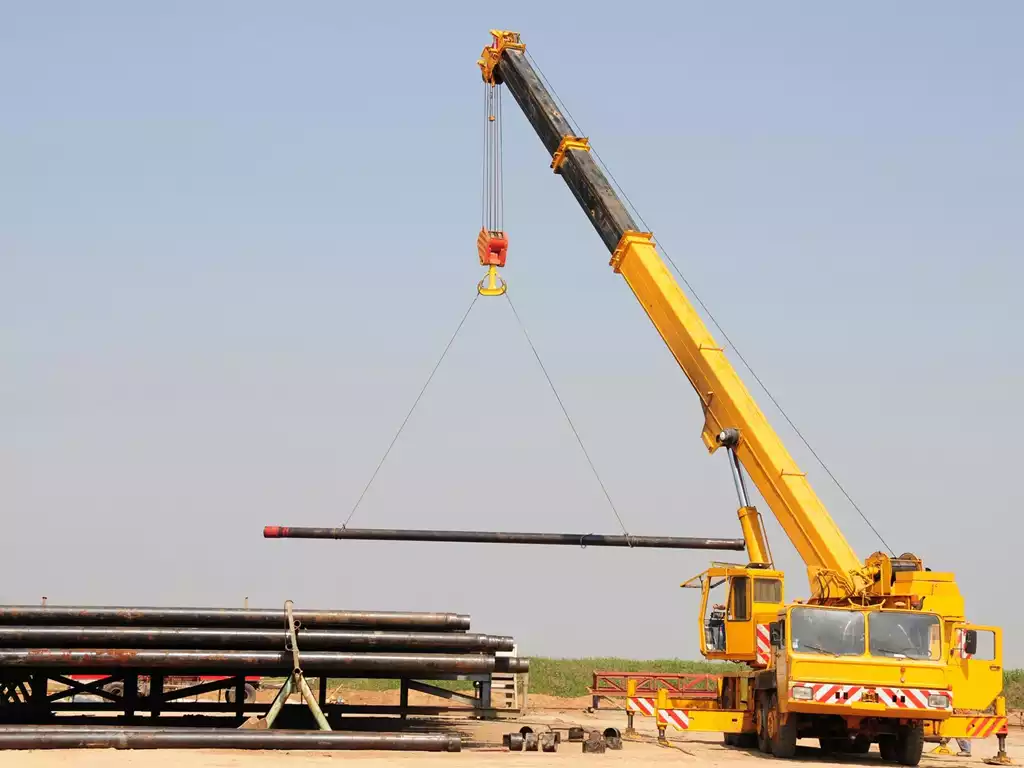
Rental mobile crane services help you manage heavy lifting on your job site at lower costs and better speed. Your safety and the equipment’s depend on following strict safety measures when working with a rented mobile crane. A mere accident with safety precautions
not in place will cause harm to people and equipment, plus extend building work schedules while costing money to fix. Construction companies need to practice standard industry methods and provide detailed training to make rented mobile crane operations safe.
Understanding the Crane’s Specifications
Each mobile crane carries clear details about how much load it can handle, plus its operational boundaries and technical needs. Before employing a rented crane, operators and site managers have to carefully study the technical documents provided by the manufacturer. Studying a crane’s features helps operators avoid exceeding safety constraints during operations. Not complying with these requirements puts both the crane and the people at work at risk of major damage and harm. Learn all features and rules that come with a rented crane to operate it safely and productively.
Pre-Operation Inspection and Checklist
Inspection of the mobile crane rental needs to happen as part of your initial preparation steps. The operator must examine all mechanical elements and hydraulic parts to confirm that lubricants are present and all safety systems are working correctly. The rental company needs to provide operators with a pre-operation inspection list that covers all vital parts of the mobile crane. Regular maintenance decreases the chance of sudden failures and protects both workers and equipment. Routine checks both lengthen the equipment’s lifespan and catch safety risks when they are still small.
Proper Training and Certification for Operators
Specialist training is needed to use mobile cranes. The rented equipment needs to be operated by individuals who are officially certified and trained for the job. Training needs to include all necessary knowledge on crane basics and sophisticated load-moving practices. Workers who operate mobile cranes need to understand emergency steps and know all safety protocols that apply to each work location. Rental businesses train operators before they start working with their equipment to maintain safe equipment usage. When workers learn to use rented equipment properly, they decrease the chances of accidents and increase project output.
Safe Load Handling and Weight Distribution
How a crane operator controls and places the load determines safety during operation. A crane will suffer major damage or collapse when someone uses it at a weight level that goes beyond its approved limits. Before lifting, the operator needs to correctly measure load weights and spread them evenly across the load. Rigging tools and load attachment methods that work correctly help the equipment lift smoothly without load movements. Following load capacity limits helps prevent accidents during lifting while making operations run smoothly and without risks.
Maintaining Clear Communication on Site
A smooth working environment needs good communication links between crane operators and ground workers under signal people’s control. Effective communication with radio sets or hand signals provides fast transmission that prevents mistakes, which often cause major accidents. Team members must know all crane operating signals and safety signals. Clear communication methods allow all team members to coordinate their actions, especially during hazardous work with concurrent activities. A well-established communication system gives all workers access to crane status information, which lowers their risk of crane-related incidents.
Monitoring Weather and Environmental Conditions
Weather influences how well mobile cranes can operate without risk. Strong winds combined with rainy weather or slippery ground surfaces make it hard for operators to keep control of the crane. Weather reports should be reviewed by operators before lifting starts, so they must stop operations when conditions become unsafe. Rental companies share detailed advice about crane safety operations with their customers. Examining both ground stability and any nearby obstacles plus power lines across the working area, needs proper attention. Operating during unsafe weather or environmental hazards endangers both workers and heavy equipment machinery because serious accidents can happen.
Emergency Preparedness and Response
Every safety system has a chance of failing despite our attempts to prevent it. Everyone who works at the site must know the emergency steps such as how to leave the area, stop all equipment properly, and provide initial medical care. Emergency training sessions help workers take fast and right actions when accidents happen. A properly trained team handles unexpected events that protect people and property safety.
Overview
Maintaining mobile crane safety when you rent one depends on both learning correct procedures and performing routine checks, plus having clear teamwork and following safe load-handling rules. Safety-focused companies enable employees to stay safe and keep work progress going while avoiding financial setbacks. Construction teams get better results from their rented mobile cranes through safe operating techniques and by reducing heavy lifting dangers. Working with heavy equipment requires safety to be first in order to prevent major accidents from small errors. By doing this in our routines, we can lift with perfect accuracy while building solid trust and keeping assets secure at all times.





1 thought on “Safety Tips for Operating a Rented Mobile Crane on Job Sites”